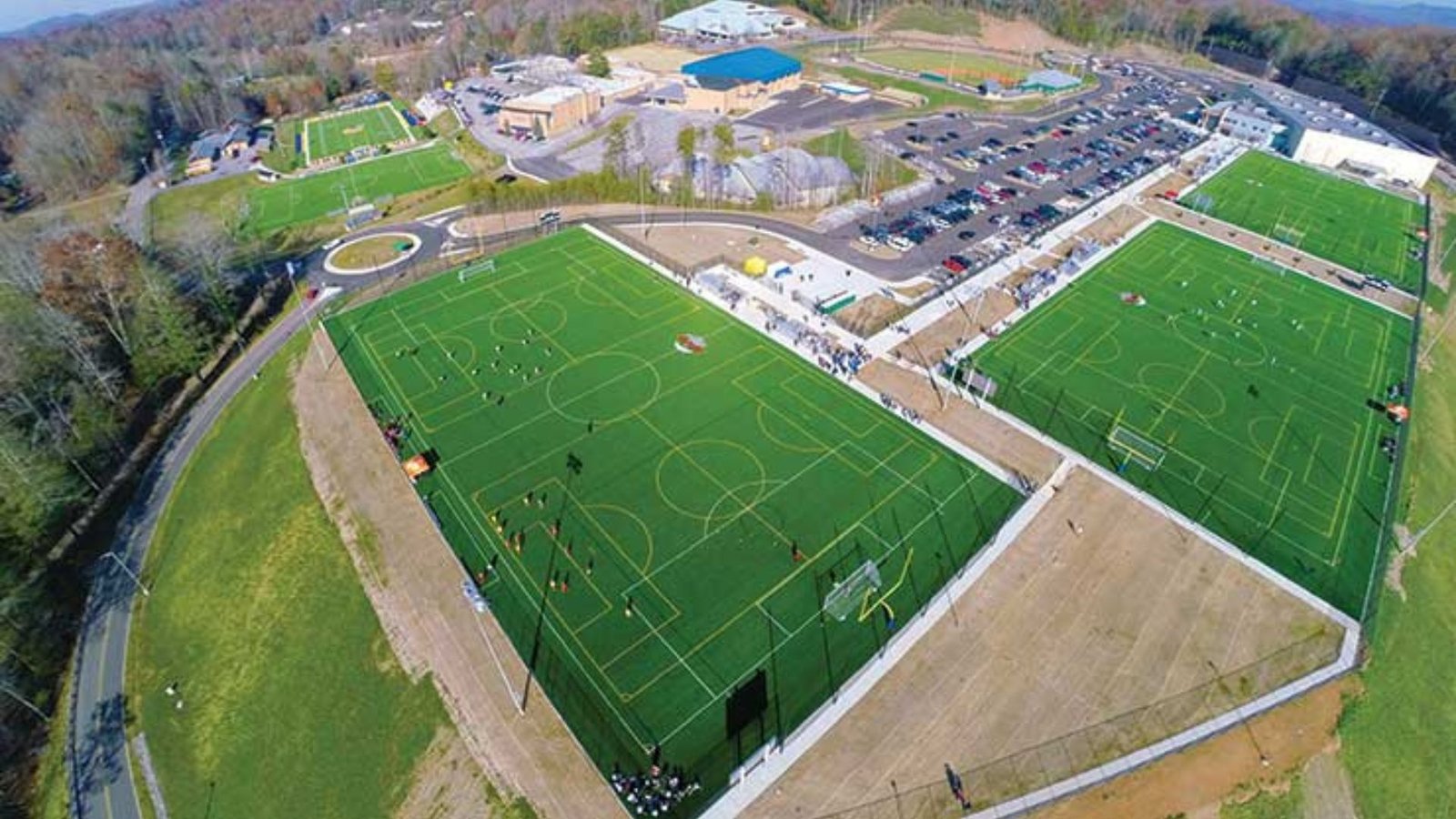Real estate plays a crucial role in the development and success of sports facilities. From choosing the right location to investing in property, the real estate sector provides the foundation upon which sports venues are built and operated. This article examines how real estate supports sports facilities, highlighting key factors such as property investment, strategic location, and infrastructure development.

Strategic Location and Accessibility
Prime Locations for Sports Facilities
Choosing a strategic location is essential for the success of sports facilities:
- High Visibility: Sports facilities located in high-visibility areas attract more visitors and fans. Being situated in prominent locations increases the chances of high attendance and engagement.
- Proximity to Public Transportation: Facilities near public transportation hubs, such as bus and train stations, are more accessible to a broader audience. Easy access encourages higher attendance and reduces travel-related barriers.
- Local Amenities: Proximity to amenities like hotels, restaurants, and retail stores enhances the overall experience for visitors. Convenient access to these services supports local businesses and contributes to a positive event experience.
Community Integration
Integrating sports facilities into the community enhances their success:
- Community Involvement: Locating sports facilities in areas with strong community engagement fosters local support and involvement. Community-based facilities often benefit from local sponsorships, volunteer support, and fan loyalty.
- Economic Impact: Sports facilities in community-centric locations contribute to local economic development. They generate revenue through ticket sales, concessions, and events, benefiting nearby businesses and creating job opportunities.
- Cultural Fit: Aligning sports facilities with the cultural and social fabric of the area helps build a strong connection with local residents. Facilities that reflect local interests and values are more likely to attract and retain community support.
Property Investment and Development
Real Estate Investment for Sports Facilities
Real estate investment is vital for developing and maintaining sports facilities:
- Funding and Financing: Investment in real estate provides the capital needed for the construction and renovation of sports facilities. Real estate developers, investors, and public-private partnerships play key roles in financing these projects.
- Value Appreciation: Sports facilities can enhance the value of surrounding properties. Successful venues increase demand for nearby real estate, contributing to property value appreciation and attracting further investment.
- Long-Term Returns: Investing in sports facilities often yields long-term financial returns. Revenue from events, sponsorships, and facility rentals can provide a steady income stream and contribute to the facility’s financial sustainability.
Facility Design and Construction
The design and construction of sports facilities are influenced by real estate considerations:
- Optimal Use of Space: Effective use of available space ensures that sports facilities are functional and efficient. Real estate developers work to maximize the utility of the property while meeting the needs of the sports facility.
- Infrastructure Integration: Integrating sports facilities with existing infrastructure, such as roads, utilities, and parking, enhances accessibility and functionality. Proper planning and coordination with local infrastructure are essential for successful development.
- Sustainability Features: Modern sports facilities often incorporate sustainable design features, such as energy-efficient systems and eco-friendly materials. Real estate developers focus on incorporating these features to reduce environmental impact and operating costs.
Enhancing Fan Experience
Accessibility and Convenience
Real estate supports the fan experience through accessibility and convenience:
- Parking Facilities: Adequate parking is essential for accommodating large crowds at sports events. Real estate planning includes the development of parking structures and lots to ensure that attendees have convenient access to the venue.
- Adjacent Services: The presence of nearby services, such as food and beverage options, enhances the fan experience. Real estate development often includes plans for adjacent retail and hospitality services to support event-goers.
- Safety and Security: Real estate considerations include the implementation of safety and security measures around sports facilities. Proper planning for crowd management, security personnel, and emergency services ensures a safe environment for attendees.
Fan Amenities and Comfort
The design of sports facilities focuses on fan amenities and comfort:
- Seating and Viewing: High-quality seating and optimal viewing angles are key factors in enhancing the spectator experience. Real estate development includes attention to seating arrangements, sightlines, and accessibility for all fans.
- Climate Control: Modern sports facilities often include climate control systems to ensure comfort during events. Real estate considerations include the integration of heating, cooling, and ventilation systems.
- Hospitality Areas: Facilities often feature hospitality areas, such as VIP suites, lounges, and concourses. These areas provide additional amenities and enhance the overall experience for premium ticket holders and guests.
Supporting Local Economy and Community
Economic Impact
Sports facilities contribute to the local economy in several ways:
- Job Creation: The construction and operation of sports facilities create jobs in various sectors, including construction, management, and event staffing. These jobs support local employment and economic growth.
- Business Opportunities: Local businesses benefit from the increased foot traffic and spending generated by sports events. Restaurants, hotels, and retailers experience higher sales and revenue as a result of events held at nearby sports facilities.
- Tourism Revenue: Sports facilities attract visitors from outside the area, boosting tourism revenue. Visitors spend money on accommodation, dining, and entertainment, contributing to the local economy.
Community Benefits
Sports facilities provide numerous benefits to local communities:
- Recreational Opportunities: Facilities offer recreational opportunities for residents, including sports leagues, fitness classes, and community events. These opportunities promote healthy lifestyles and community engagement.
- Social Impact: Sports facilities serve as gathering places for social and cultural activities. They foster community spirit, provide a venue for local events, and strengthen social connections among residents.
- Youth Development: Many sports facilities focus on youth development programs, offering training and competition opportunities for young athletes. These programs support skill development, teamwork, and positive social interactions.
Challenges and Considerations
Balancing Development and Community Needs
Real estate development for sports facilities must balance various factors:
- Cost Management: Managing the costs of real estate development, construction, and maintenance is essential. Developers must ensure that investments align with budget constraints and financial projections.
- Community Impact: Developers must consider the impact of sports facilities on local communities, including potential disruptions and environmental effects. Engaging with community stakeholders and addressing concerns is crucial for successful development.
- Long-Term Viability: Ensuring the long-term viability and sustainability of sports facilities requires ongoing investment and management. Real estate planning includes strategies for maintaining facility operations and adapting to changing needs.
Conclusion
Real estate plays a pivotal role in supporting the development and success of sports facilities. From selecting strategic locations and investing in property to enhancing fan experiences and benefiting local communities, real estate considerations are integral to creating functional and successful sports venues.
By understanding the connections between real estate and sports facilities, stakeholders can make informed decisions that contribute to the growth and success of both the facilities and the communities they serve. Embracing these considerations ensures that sports facilities remain valuable assets and contribute positively to their surrounding areas.




